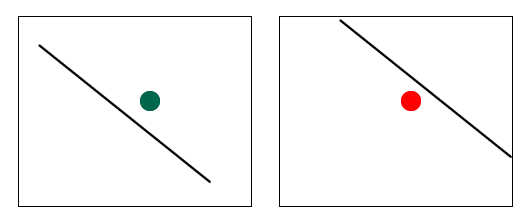Distance From Appetite. D.F.A. / Using Appetite
To adjust risk scoring to risk acceptance levels use appetite
What is risk appetite

In short Risk Appetite is the amount of risk you are willing to take. Take the example above, the risk is plotted the same on both maps, all that is different is the location of the line. This is the appetite line. The map on the left is outside of the appetite and green, on the left it has breached the appetite and so Red.
Using appetite allows you to decide or select risks you wish to take a bigger or smaller risk on.

You can enter risk appetite at 3 levels, so fix an appetite for specific risks or specific categories. The priority run is as above, risk level takes priority over category and scoring sets, scoring sets is the fall through if the first 2 have no set appetite.

When you look at the distance from appetite score a negative value such as -1 is good and means the risk score is within appetite. A non negative score means the risk is outside the appetite. The further away the risk score is from the appetite, the bigger the number.
Using appetite to measure risk can be preferential to just looking at the score values as their may be factors such as local issues or board objectives to consider. They can also help you identify risks that may have more controls than are needed.